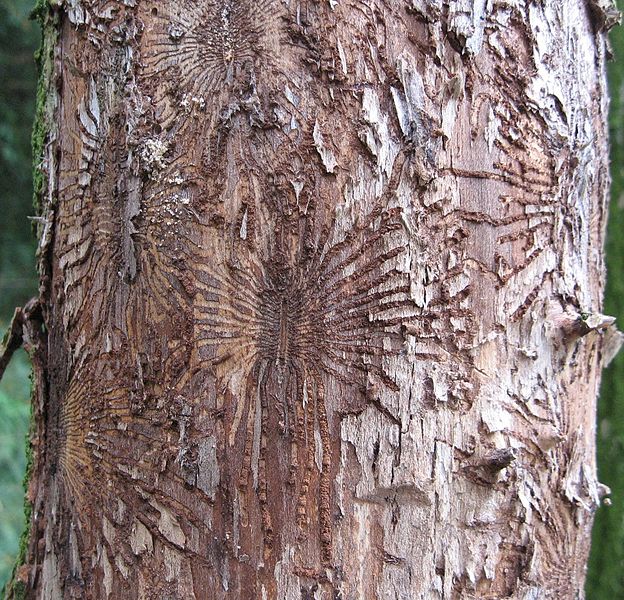Introduction
Dutch elm disease is a fungal infection that affects many species of elm. It is one of the most destructive tree diseases in North America and Europe. Dutch elm disease spreads through infected trees, killing individual branches. Prolonged infections often culminate in the death of the tree.
History
Dutch elm disease is indigenous to Asia. In the early 1900s, it was inadvertently transported into Europe. It acquired its moniker in 1921 when, operating under the guidance of renown plant pathologist Johanna Westerdijk, Dutch phytopathologist Bea Schwarz isolated the fungus from infected elms in the Netherlands. Another Dutch pathologist, Christine Buisman, conducted a study that confirmed Schwarz’s findings. The disease soon became associated with the two researchers, garnering the name Dutch elm disease.
Dutch elm disease was unwittingly introduced into the United States in 1928 when a furniture company based in Cleveland, Ohio imported contaminated logs from France. It was later discovered in eastern Canada during the Second World War, spreading from Ontario to Saskatchewan by 1981.
Disease Cycle
The cycle of Dutch elm disease depends on the host, the fungus, and the manner in which infection occurs.
The Elm Host
The native species of American elm vary in their susceptibility to Dutch elm disease. American elm is highly susceptible. September elm, slippery elm, rock elm, and cedar elm range from susceptible to moderately resistant. No native elms are completely immune to the disease, but some individuals or cultivars express the ability to recover from infection. European and Asiatic elms exhibit a greater resistance to the disease than American elm.
Numerous physical factors influence tree susceptibility. These factors include seasonal changes, climatic conditions, and the vitality of the tree. Dutch elm disease requires moist conditions to thrive. As such, trees are most susceptible to infection during spring and summer, when rainstorms are most prevalent. Trees are not as vulnerable to infection during periods of drought. Trees that develop at a slow rate are less prone to infection than more vigorous trees.
The Fungus
The causal agents of the disease are ascomycete fungi. Three species of the disease have been recognized: Ophiostoma ulmi, Ophiostoma himal-ulmi, and Ophiostoma novo-ulmi. Ophiostoma ulmi and Ophiostoma novo-ulmi are the most frequently observed in Europe and North America. Of the two, Ophiostoma novo-ulmi is the more virulent species. This fungus was responsible for causing extensive mortality in elms across Europe and North America throughout the 1960s and 1970s. The third species, Ophiostoma himal-ulmi is endemic to the western Himalaya, and has been reported in Europe, North America, and western Asia.
Infection Through Elm Bark Beetles
Infections of Dutch elm disease are often closely linked to the breeding habits of three species of bark beetle: native elm bark beetle (Hylurgopinus rufipes), European elm bark beetle (Scolytus multistriatus), and banded elm bark beetle (Scolytus schevyrewi). The beetles are attracted to stressed trees, as well as dying or dead elm wood. Once they have found a suitable location, the adult beetles tunnel into the bark, creating passageways called galleries within the inner tissue. The eggs overwinter and hatch the following spring, revealing masses of larvae. The larvae begin to feed in the inner bark, consuming the woody tissue, and sapwood. Upon maturation, they emerge from the elm wood. If the fungus is present in the wood that the beetles have infested, it will produce sticky spores in the beetle galleries. The spores of the fungus are consumed by, or become stuck to the adult beetles. As the beetles migrate to healthy trees, they feed in twig crotches or inner branch bark, transmitting the fungus into the injured wood. Large beetle populations often feed on a single tree, resulting in multiple points of infection.
The native elm bark beetle is the predominant factor in Wisconsin, Maine, New York, and New England, as well as the northern parts of Minnesota, and most of Canada. In other sections of North America, the European elm bark beetle is more common. The banded bark beetle has been reported in Colorado and Utah.
Infection Through Grafted Roots
Sometimes the roots of adjacent trees fuse together. These fusions are called root grafts. When a fusion occurs, the disease fungus may be transported through the root grafts. Infections that occur through root grafts can spread rapidly throughout the tree. Root grafts are a significant cause of death in urban areas where elms are spaced closely together.
Symptoms of Dutch Elm Disease
The initial symptoms of Dutch elm disease are most apparent in the tree’s crown. The leaves of infected trees begin to wilt, assuming a distorted appearance. The leaves soon become discolored, turning a pale yellow before transitioning to brown. The pattern of symptoms within the crown varies depending on where the infection first enters the tree. If the fungus invades through the upper crown, symptoms often appear at the terminal point of an individual branch. This process is referred to as flagging. As the infection spreads, symptoms will progress downwards throughout the rest of the crown. Multiple branches may be individually infected, resulting in symptoms developing at multiple points in the crown. If the fungus is transmitted into the tree through a root graft, symptoms may begin in the lower crown, on the side closest to the graft. Symptoms typically begin in late spring, but they can develop at any point during the growing season.
In newly infected branches, dark brown streaks will appear in the sapwood. To detect this staining, strip the bark from a dying branch to expose the outer layer of wood. The staining may be overlaid by seemingly healthy wood later in the season. If infection occurred the previous year, the current sapwood may not be discolored.
Prevention & Management
- When planting, consider selecting disease resistant elm cultivars or other tree species.
- The most effective method for preventing Dutch elm disease is to limit bark beetle populations. In areas where the native elm bark beetle is present, a registered insecticide should be applied to the lower stem of healthy elms in late summer or early fall. In locations where the European elm bark beetle predominates, insecticide applications should be performed in early spring to prevent adults from feeding in twig crotches and bark.
- Fungicides can be utilized to control disease outbreaks. Applications must be performed at all potential points of infection. Macroinjections are ideal, as they provide thorough distribution of the chemical into the crown. Macroinjections should be made soon after budburst. Flush the holes created from each injection with water to reduce damage to the cambium. Applications should be repeated every one to three seasons, depending on the chemical used. Fungicide applications can produce undesirable side effects, including occasional leaf scorching or leaf loss. This damage is not permanent; elms will generally replenish their foliage in summer.
- Systemic fungistat treatments can be administered to healthy trees that are not symptomatic. Fungistats are compounds that inhibit fungal growth or sporulation. Fungistats are infused into the root flare of the tree. This enables the fungistat to be thoroughly distributed throughout the tree’s crown. Fungistat treatments are a preventative method; they can protect a tree for up to two growing seasons.
- In settings where there is an abundance of elms, promptly remove diseased trees or branches. This will help reduce the number of potential breeding sites for elm bark beetles. Infected stems and branches should be removed and destroyed before bark beetles emerge. During the growing season, removal of infected trees should occur within two to three weeks of detection. If an infected tree is discovered in late fall or winter, removal should be completed before April, when the beetles emerge.
- Disrupt root grafts between diseased trees and healthy trees. This can be accomplished through the use of a vibratory plow or trenching machine. Root grafts should be broken before the infected trees are removed. Otherwise, the healthy trees will absorb the contents of the diseased tree’s root system, enabling the infection to spread.
- Pruning can help eliminate the fungus if less than 5% of the crown has been affected. The infection must be new, and only present in the upper crown.


